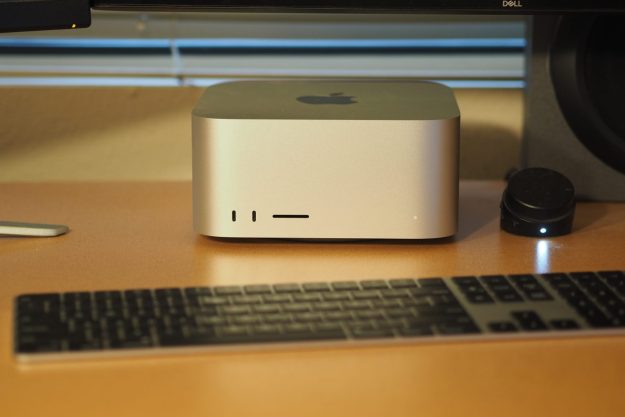HP has officially announced the Dragonfly Pro at CES 2023 as a unique Windows laptop that specifically targets those shoppers who might default to a MacBook.
This laptop branches out from a new arm of its Dragonfly line, which is typically focused on the commercial market. Coupled with the Dragonfly Pro Chromebook, which has also been announced at CES, HP hopes to get the attention of a new demographic, specifically with its new support services that come built-in.
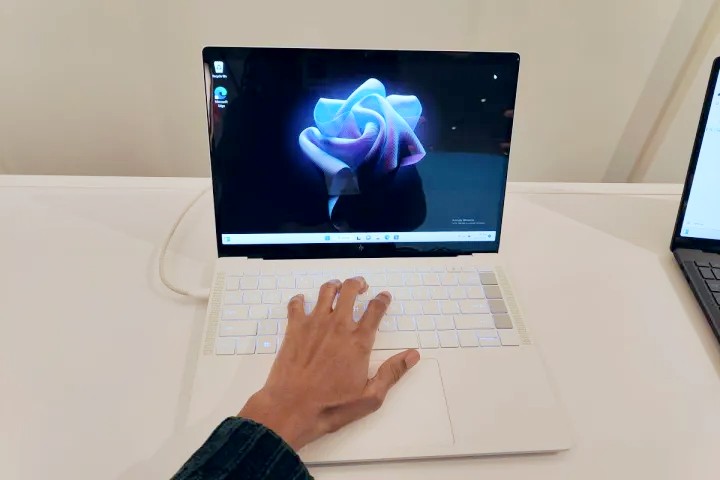
HP Dragonfly Pro specs
| HP Dragonfly Pro | |
| Dimensions | 12.39 x 8.78 x 0.72 inches |
| Weight | 3.53 pounds |
| Processor | AMD Ryzen 7 7736U |
| Graphics | AMD Radeon Integrated Graphics |
| RAM | 32GB LPDDR5 6400 Mbps RAM (onboard) 16GB LPDDR5 6400 Mbps RAM (onboard) |
| Display | 14-inch diagonal Full HD (1920 x 1200) IPS display |
| Storage | 1TB PCIe NVMe SSD (onboard) 512GB PCIe NVMe SSD (onboard) |
| Touch | Multitouch enabled |
| Ports | 2 USB-C Thunderbolt 4, 1 USB-C 3.2 |
| Wireless | Wi-Fi 6E Dual Band, Bluetooth 5.2 |
| Webcam | 5-megapixel IR camera with camera shutter |
| Colors | Sparkling Black, Ceramic White |
| Operating system | Windows 11 Home |
| Security | Fingerprint sensor, Facial recognition, Windows Hello log-in |
| Battery | 64.6-watt-hours, 96-watt USB-C AC power adapter |
| Price | Available in spring 2023 |
Design
One notable aspect of the HP Dragonfly Pro is that the laptop is on the heavier side for a product that is considered an easily portable device.
At 3.53 pounds, it did have a little bit of heaviness to it when being held with one hand. The 0.72-inch thickness isn’t exactly trim either. However, this laptop is considered ideal for the hybrid type of worker, who might only be carrying the laptop in transport and is stationary otherwise, whereas its HP Dragonfly Pro Chromebook counterpart is more of a device that can be used on the go and is a little bit lighter.
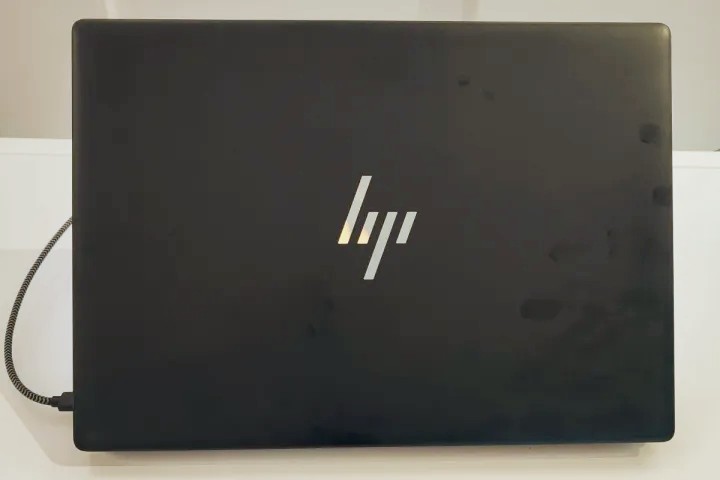
Still, the HP Dragonfly Pro is a one-stop shop in terms of colors and hardware options. HP said it has kept many aspects of the product minimal and does not allow customers to do much customization. This not only helps buyers with decisions, but also aids the company on the support end in terms of identifying models.
The HP Dragonfly Pro is available in Sparkling Black and Ceramic White. Its memory and storage specifications will be discussed below.
Input on the laptop includes two Thunderbolt ports and one USB-C port, while audio support includes four speakers — two up-firing and two down-firing, with tuning by Bang & Olufsen. Physical security features include a fingerprint sensor.
Display
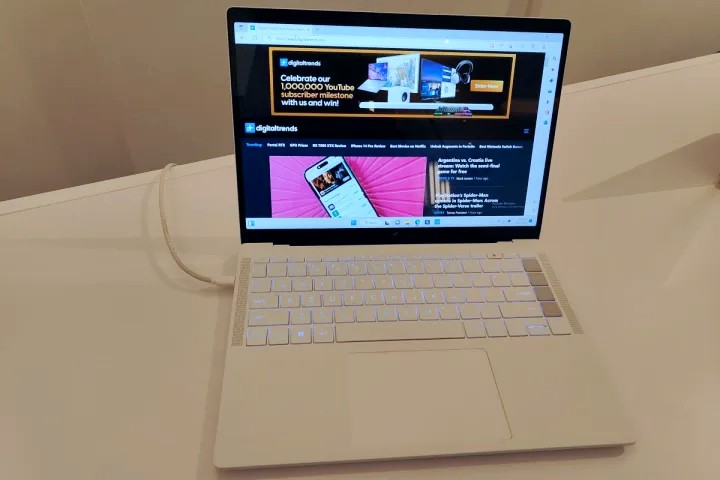
The 14-inch Full HD 1920 x 1200 resolution display on the HP Dragonfly Pro was specifically fashioned to focus on performance and long battery life. While the multitouch-enabled IPS screen has many positive specs such as a 100% sRGB color range and Low Blue Light certification, it also has a fairly low brightness at just 400 nits. Notably, this isn’t quite as sharp as the HP Dragonfly Pro Chromebook,
With HP playing up the custom AMD Ryzen 7 processor included on the HP Dragonfly Pro, it could be easy to assume that the screen is not an important aspect of this product. At a glance, display quality does not appear to suffer and the dark backgrounds and web pages we viewed were especially impressive, with minimal glare and solid color contrast.
HP also notes that content consumption is one of the primary use cases for this device’s target consumer. The HP Dragonfly Pro display is also flicker-free, has an edge-to-edge glass design, and is coated with antireflective Corning Gorilla Glass NBT.
The 5-megapixel IR camera includes a camera shutter. It supports facial recognition and the Windows Hello log-in security feature. HP has been putting these high-quality cameras on its Elite Dragonfly laptops for the past couple of years, and they’re excellent.
Keyboard and trackpad
The keyboard on the HP Dragonfly Pro is the star of the highlight features of the laptop. HP hopes this unique keyboard aspect will make the device especially appealing.
In addition to its full-service keyboard with function keys, direction arrows, and a large haptic trackpad, the HP Dragonfly Pro includes four hotkeys located on the right side of the keyboard. The hotkeys include the HP Control Center key, which takes you to easy-to-find information about your Dragonfly Pro, including account information, username, serial number, and information on device controls. HP said this app will be fleshed out further so users can control all of their HP apps from one location, even the HP printer app, for example.
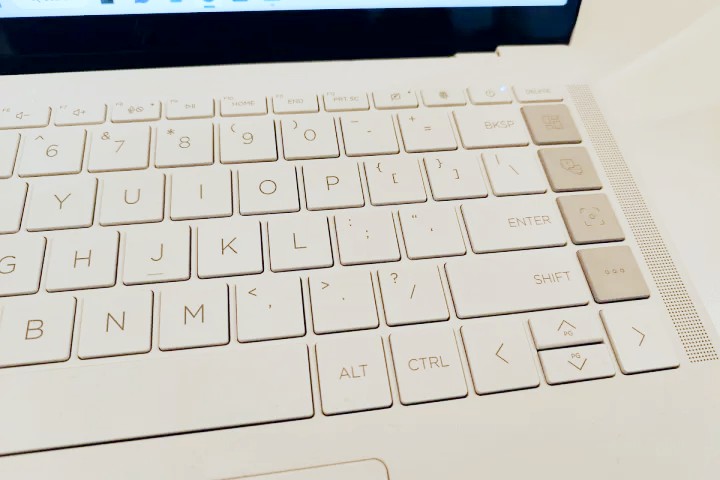
The second key is the 24/7 concierge support key, which is the true flagship feature of the hotkeys. This key will help put you in contact with HP’s experts, who can help troubleshoot or schedule repairs on an HP Dragonfly Pro model that is having an issue. HP said the agents will be able to know your device model and specs ,and are trained in hardware and software to get you to a resolution quickly.
You can also subscribe to HP’s damage protection add-on as a monthly subscription. In the event of accidental damage, HP will send you a new model after you send the broken device back. You can also at that time extend your 24/7 support for an additional year to cover your new product.
The third key is the camera settings key, which allows you to have easy access to the device’s camera when needed. HP noted it is an easy way to access the background blur options while on a conference call, for example.
The fourth key is a custom key, which you can use to set up any application for easy access, from Instagram to Microsoft Word to HP.com.
Performance and battery life
HP noted the heavy emphasis on the computing hardware and graphics on the Dragonfly Pro, which are set to give the device intuitive performance and long battery life. In particular, the laptop is designed to allocate maximum performance when needed and to slowly increase or decrease CPU usage as requirements change throughout the day.
The HP Dragonfly Pro includes a custom AMD Ryzen7 7736u mobile processor and AMD Radeon integrated graphics chip to execute various tasks, which might include content viewing, web browsing, designing with software, and playing music, among other functions.
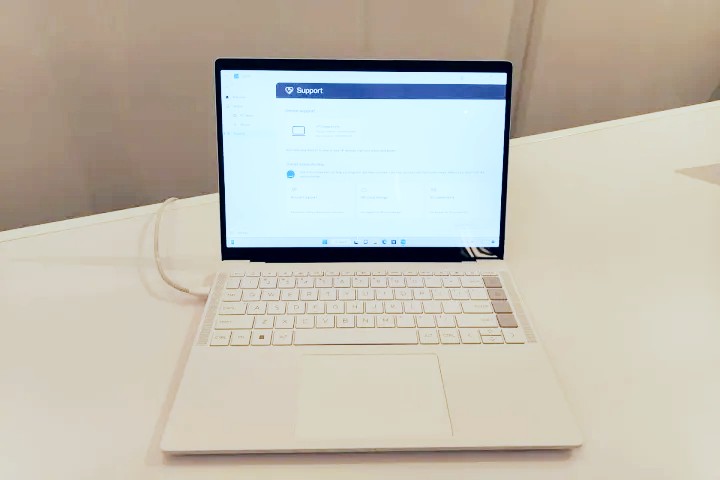
AMD noted that the CPU includes a larger thermal solution, custom vapor chamber, and a custom fan to allow for longer battery life and higher efficiency, which should result in cooler skin temps and a quieter device. It also includes 28 sensors for adaptive power management. This helps it to constantly understand the current state of the device and how the device is being used. Many of the power sensors help keep the temperature and acoustics low.
The CPU also aids in powering the AI experiences for videoconferences, as well as the audio stack and input and output processing. In addition to its Bang & Olufsen tuning, the HP Dragonfly Pro also supports post-processing tuning by Soundwire Waves Maxx audio for up to 80 decibels without damaging its speakers.
Hardware for the HP Dragonfly Pro includes 16 GB LPDDR5 6400 Mbps and 32 GB LPDDR5 6400 Mbps RAM options, as well as 512GB PCIe NVMe and 1TB PCIe NVMe SSD options. HP isn’t allowing buyers to customize the laptop beyond the available options to keep selections simple and to make the models easily identifiable for its 27/7 concierge support agents.
I understand the explanation and feel the storage tiers HP opts for are fairly high. I wonder if one more step up could have been considered since this laptop is being marketed toward producers and creatives. The RAM could potentially be higher as well in comparison.
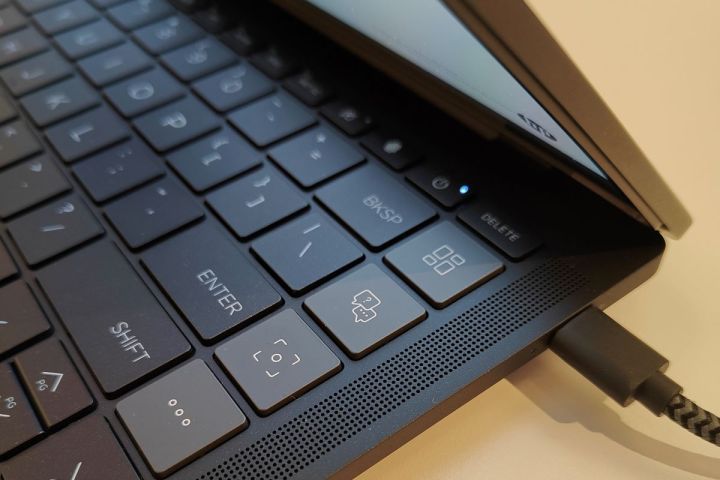
Battery life on the HP Dragonfly Pro is expected to last for up to 16 hours of mixed-use, 16 hours of video playback, and 12.5 hours of wireless streaming for its 64.6-watt-hour battery. It is paired with a 96-watt USB-C adapter that supports fast charging of 50% in 30 minutes and is charging-agnostic with other devices.
For connectivity, the laptop supports Wi-Fi 6E and Bluetooth 5.2, and HP said 5G is coming soon. Software-wise, the HP Dragonfly Pro runs Windows 11 Home.
Price and availability
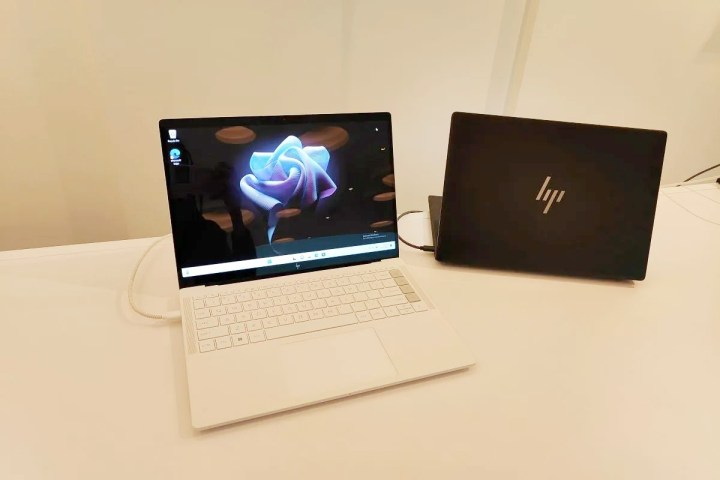
The HP Dragonfly Pro looks and feels like a solid device overall. It addresses what most in the professional space would need, with the exception of the lack of configuration, which is the intent.
What HP is trying to do is treat a certain branch of everyday consumer like a commercial consumer. It’s an interesting prospect at a time when hardware and its shiny new features are becoming less of a selling point. In its place is Software as a Service (SaaS), and that is exactly what the brand is really trying to sell.
The HP Dragonfly Pro will release in spring 2023, with HP set to share pricing details closer to launch.
Editors' Recommendations
- The XPS 16 is fighting an uphill battle against the MacBook Pro
- The best MacBook to buy in 2024
- Best MacBook deals: Get an Air for $605 and save on M3 MacBook Pro
- The MacBook Air 15 vs. MacBook Pro 14: the easy way to decide
- Why one of my favorite laptops still struggles against the MacBook Pro


